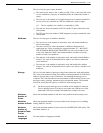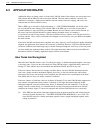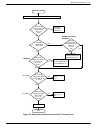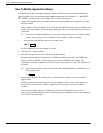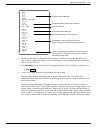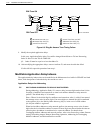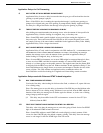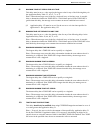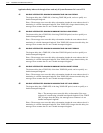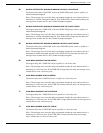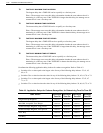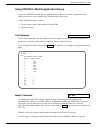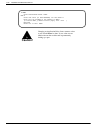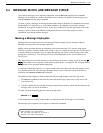
6-52 Installation and Maintenance Volume
Octel 200/300 S.4.1 PB60019−01
INTERDIGIT TIMEOUT WHILE WAITING FOR DTMF CALL RECORD
The length of time that the message server waits for subsequent DTMF digits of an enhanced
DTMF in-band call record. After the message server receives a DTMF digit of a call record,
this timer starts. If the time ends before receiving another digit, the message server assumes
that the PBX is finished sending digits. If the digits received match a Call Record Condition
in the DTMFINT Table, the message server takes the appropriate action (plays mailbox
greeting, etc.). If the digits received do not match a Call Record Condition, the message
server plays the default company greeting.
Use — If a PBX is slow in sending DTMF digits, this delay should be increased to
compensate for this.
DELAY BEFORE PLAYING PROMPT AFTER RECEIVING CALL RECORD
The time that the message server waits before playing a greeting or prompt after receiving a
complete enhanced DTMF call record.
Use — When the PBX sends a DTMF call record to the Octel 200/300, the speech path is
not sent through to the caller. The caller hears silence or a ringback tone. After the PBX sends
the last DTMF digit of the call record, it connects the caller and the Octel 200/300. If the PBX
is slow to send the speech path through, part of the greeting or prompt could be clipped. By
extending this delay, the message server waits longer before playing a greeting or prompt.
DURATION OF ONE RING IN MILLISECOND UNITS
Detects Ring-No-Answer (RNA). The default for this delay is a value of 5000 msec.
Use — When internal calls have a value specified in Information Index Table 7 —
NUMBER OF RINGS BEFORE EXTENSION NO ANSWER, this value multiplied by the
duration of one ring gives the time-out value for RNA. When message waiting outcalls have a
value specified in Information Index Table 8 — NUMBER OF MESSAGE WAITING
RINGS, this value is used to compute the time-out value for RNA.
MAXIMUM WAIT TIME FOR CALL TRANSFERRING HANG UP
Detects call transferring hang-up delays. The default for this delay is a value of 30000 msec.
Use — When specifying the maximum time the message server waits for the call
transferring party to hang up, so that the transfer to an extension forwarded to the message
server is completed.
Application Delays for Cadence Recognition
MAXIMUM TONE ON PERIOD FOR ANY TONE
This delay must be set to a value equal to the largest value for any of the following delays set
in the Application Delay Table: 53, 61, 63, 69, or 73.
Use — When the message server looks for a ringback, busy, or fast-busy tone, it uses this
delay to determine whether the TONE ON is a valid tone. If the TONE ON is longer than this
delay, the message server assumes an answer condition has occurred.
MINIMUM TONE ON PERIOD FOR ANY TONE
This delay must be set to a value less than the value for any of the following delays set in the
Application Delay Table: 54, 62, 64, 70, or 74.
Use — When the message server looks for a ringback, busy, or fast-busy tone, it uses this
delay to determine whether the TONE ON is a valid tone. If the TONE ON is less than this
delay, the message server assumes an answer condition has occurred.
111
112
141
142
49
50




